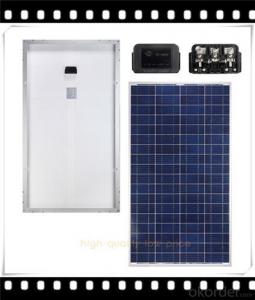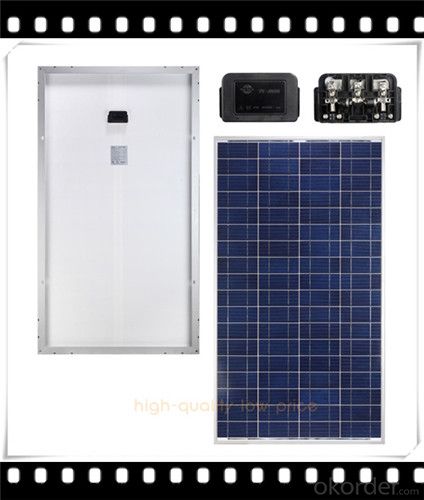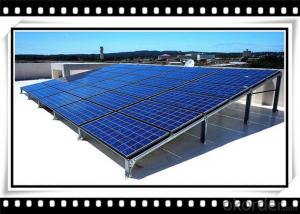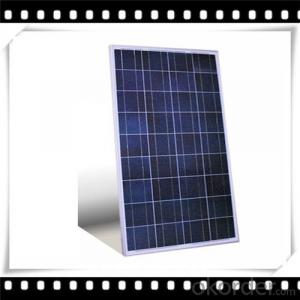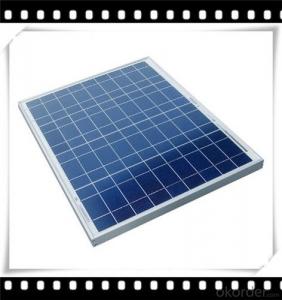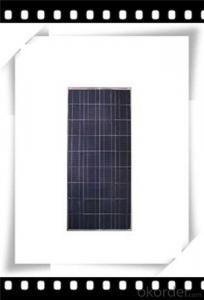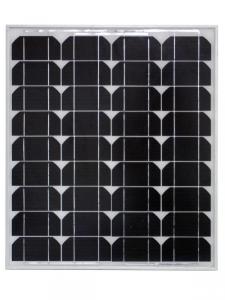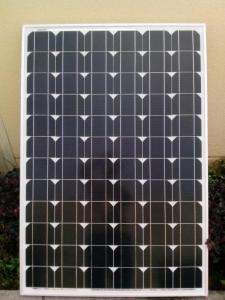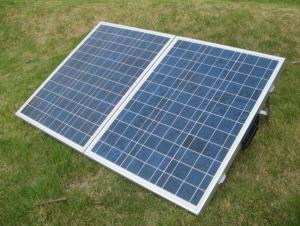Solar One 2W Poly Solar Panel Mini Newest Solar Panel CNBM
- Loading Port:
- Qingdao
- Payment Terms:
- TT OR LC
- Min Order Qty:
- 10 set
- Supply Capability:
- 300000 set/month
OKorder Service Pledge
OKorder Financial Service
You Might Also Like
Polycrystalline Solar Modules
CNBM offers a range of small, medium and large polycrystalline solar modules, designed for a range of requirements.
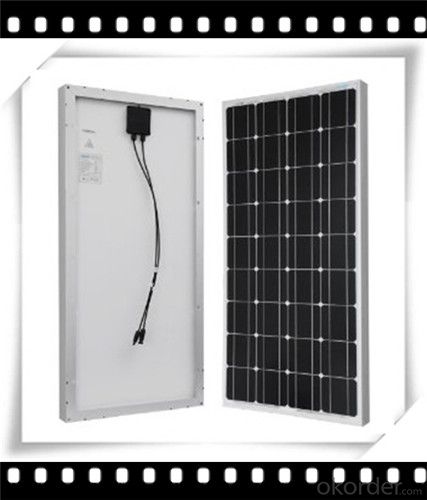
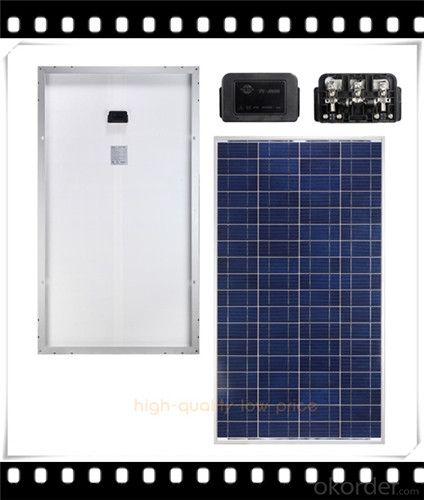
Specifications:
+/-3% |
Polycrystalline silicon solar cells (156 x 156mm) |
60 (10 x 6) |
1650 x 990 x 40 |
25.5 |
Limits:
Operating Temperature | -40~+85? |
Storage Temperature | -40~+85? |
Maximum System Voltage | 1000 VDC max. |
Hail Impact | Diameter of 28mm with impact speed |
Temperature and Coefficients:
NOCT | 48C+/-2? |
Voltage temperature coefficient (%/K) | -0.35 |
Current temperature coefficient (%/K) | 0.05 |
Power temperature coefficient (%/K) | -0.45 |
Characteristics:
Model: | SGM-200P | SGM-210P | SGM-220P |
Max-power voltage Vmp (V) | 29.2 | 29.4 | 29.41 |
Max-power current Imp (A) | 6.85 | 7.14 | 7.48 |
Open-circuit voltage Voc (V) | 36.5 | 36.69 | 36.9 |
Short-Circuit Current Isc (A) | 7.28 | 7.6 | 7.93 |
Max-power Pm(W) | 200 | 210 | 220 |
Model: | SGM-230P |
Max-power voltage Vmp (V) | 29.8 |
Max-power current Imp (A) | 7.72 |
Open-circuit voltage Voc (V) | 37.31 |
Short-Circuit Current Isc (A) | 8.19 |
Max-power Pm(W) | 230 |
STC: Irradiance 1000W/m2, module temperature 25?, AM-=1.5
Poly Crystalline Solar Panels Specifications Range
Maximum Power (Pm) | Dimension | Weight | Operating Voltage (Vmp) | Operating Current (Imp) | Open Circuit Voltage (Voc) | Short Circuit Current (Isc) |
0.45W | 140x80x10mm | 0.08kg | 3.3V | 150mA | 4.6V | 160mA |
1.0W | 162x140x10mm | 0.16kg | 7.5V | 150mA | 10.3V | 160mA |
4.5W | 269x251x23mm | 0.8kg | 16.5V | 0.27A | 20.5V | 0.3A |
10W | 420.1×268.9×22.6mm | 1.92kg | 17.5V | 0.58A | 20.5V | 0.6A |
20W | 425x502x50mm | 3.0kg | 16.8V | 1.19A | 21.0V | 1.29A |
30W | 593x502x22.6mm | 3.9kg | 16.8V | 1.78A | 21.0V | 1.94A |
40W | 655x537x50mm | 5.75kg | 17.3V | 2.31A | 22.1V | 2.54A |
50W | 839x537x50mm | 6.0kg | 17.5V | 2.9A | 21.8V | 3.17A |
65W | 1111x502x50mm | 7.2kg | 17.6V | 3.69A | 22.1V | 3.99A |
80W | 1204x537x50mm | 7.7kg | 17.6V | 4.55A | 22.1V | 4.8A |
- Q: Does the new horizons has a solar panel for it power resources instead using nuclear generator?
- No solar panel, and for the reason you stated - it is so far from the Sun that a solar panel would be of little use (and a lot of extra weight) at the distances where the primary part of the mission was being performed. The power source is called an RTG. We can think of it as similar to a nuclear-powered battery or a miniature nuclear power plant. As far as I know it is not intended to reach any other star. If it does, it's power will have long since depleted - and it would take thousands of years at its current speed to reach even the closest star. Closest star: Proxima Centauri, slightly more than 4 light years away. Current speed of New Horizons relative to the Sun: 4.52 km/s That's 0.000048 of the speed of light. It would take more than 20,000 years to reach Proxima Centauri *if* it were heading in that direction (which it is not).
- Q: Can solar panels be used to power a theme park?
- Yes, solar panels can be used to power a theme park. Solar panels can generate electricity from sunlight, providing a sustainable and renewable energy source. By installing a sufficient number of solar panels, a theme park can meet its energy needs and reduce its reliance on traditional power sources, contributing to environmental sustainability.
- Q: Can solar panels be used for powering Wi-Fi networks?
- Yes, solar panels can be used to power Wi-Fi networks. Solar panels generate electricity from sunlight, which can be used to power various devices, including Wi-Fi routers. This allows for the establishment of Wi-Fi networks in remote or off-grid locations where traditional power sources are either unavailable or unreliable. Additionally, solar-powered Wi-Fi networks are environmentally friendly and sustainable, as they utilize renewable energy sources.
- Q: The average solar panel produces 0% of the energy that is put into it. What is happening to the other 90%? Is it being reflected or is it being obsorbed by materials that are not a part of the solar cell? Is it possible to one day have near 00% efficient solar cell technology?
- Sunlight comes in many frequencies, that's why it's white. Solar Photovoltaics require a photon to displace an electron from a semiconductor and that only happens at one frequency depending on what the semiconductor material is, therefore only one exact frequency gets turned into power. They are working on using organic dyes or quantum dots to absorb the energy in different frequencies and re-emit the energy in the desired frequency. They also are working on using multiple semiconductor materials to try and capture more frequencies. The rest of the energy becomes heat which also reduces the efficiency of the solar cells. The lab record for solar photovoltaics is 42.8% efficiency and quantum dots promises to be 65% to 75% efficient. Keep in mind that fossil fuels are based on energy collected by photosynthesis over millions of years. The efficiency of photosynthesis with modern plants is about 0.5% and the theoretical maximum efficiency of photosynthesis is 6.6%. All of our current energy use is based upon a small fraction of 0.5% efficiency over millions of years.
- Q: Can solar panels be used in disaster relief efforts?
- Yes, solar panels can be used in disaster relief efforts. They provide a sustainable and reliable source of electricity, which is crucial during emergencies when power grids may be down. Solar panels can be deployed quickly and easily, enabling the provision of essential services such as lighting, communication, and medical equipment in affected areas. Moreover, solar energy is renewable and environmentally friendly, reducing dependency on fossil fuels and minimizing the impact on already vulnerable communities.
- Q: I was hearing that we need silver as a medal for the creation of solar panels, is this true? How much silver would be needed to make one solar panel? (if this is true)
- Some research has shown that small amounts of silver can improve the efficiency of solar panels. But this appears to be in the research stage and applies to the the thin film solar cells. Some solar panels makes use silver as the wiring in kind of a screen printing process, but you don't need to use silver, you can use copper or aluminum using different techniques instead. Generally the metal used is in small amounts and not a majority of the cost of the solar panel.
- Q: right now, you would need a suitable number of solar panels just to power house that can take up a lot of real estate. so my question is, is it feasible to create something that absorbs more of the suns energy like a magnet it would suck it up. the point of doing this would be so that we wouldnt need so much space so many panels just to power home for example.i hope thats coherent.
- we are near the edge of what is physically possible for solar power. You only get so many photons per area you know...and much of this is lost in entropy. Solar panels today are over 80% as efficient as what could ever be theoretically possible. No you will never get an easy solution to the land problem. lol what invisible talker suggests about using a black hole i suppose could be a way to increase the photons per area...but you would get much mroe power by using the tidal forces produced by a black hole than solar power heh...not to mention your panels will get sucked in...and whatever energy they produce wont be able to escape the black hole and power anything outside.
- Q: Is this a good kit for building a solar panel?
- Guide okorder /
- Q: Can solar panels be used in areas with high levels of shade or obstruction?
- Solar panels are not very efficient in areas with high levels of shade or obstruction as they rely on direct sunlight to generate electricity. However, there are certain technologies and panel designs available that can still produce energy in shaded areas to some extent, although their overall efficiency may be reduced.
- Q: How much electricity can a solar panel generate?
- The amount of electricity a solar panel can generate depends on factors such as its size, efficiency, location, and weather conditions. On average, a standard residential solar panel can generate around 250 to 400 watts per hour under optimal conditions. However, it is important to note that solar panels are typically installed in arrays, so the total electricity generation can be scaled up by adding more panels.
Send your message to us
Solar One 2W Poly Solar Panel Mini Newest Solar Panel CNBM
- Loading Port:
- Qingdao
- Payment Terms:
- TT OR LC
- Min Order Qty:
- 10 set
- Supply Capability:
- 300000 set/month
OKorder Service Pledge
OKorder Financial Service
Similar products
Hot products
Hot Searches
Related keywords
